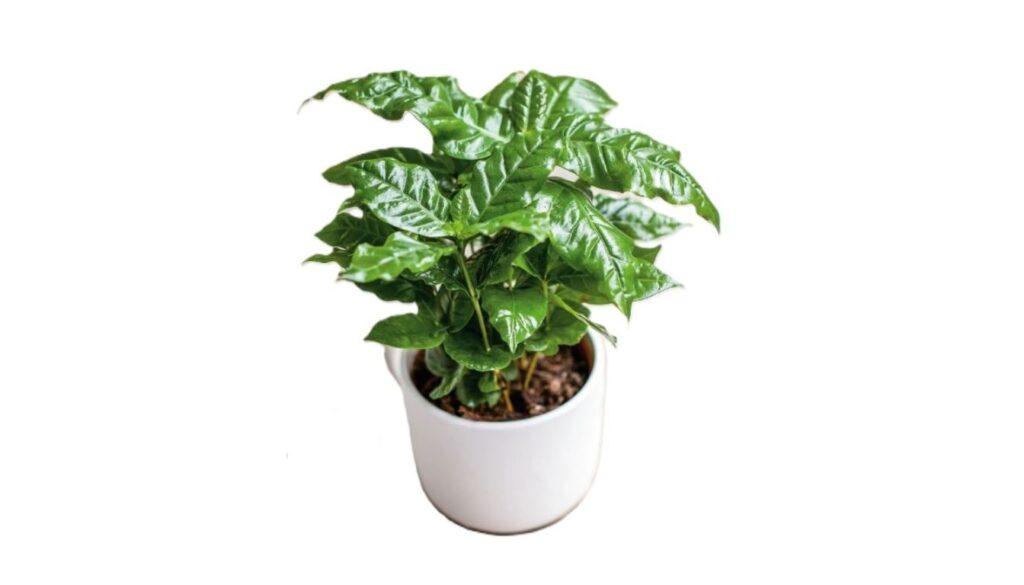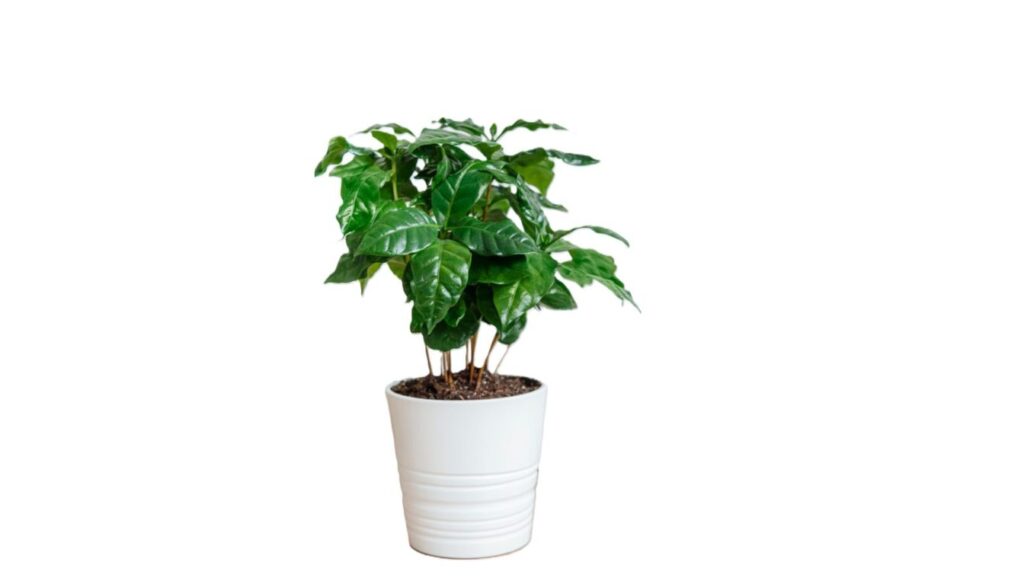Imagine waking up to the rich aroma of freshly brewed coffee made from beans you nurtured right in your own home. Growing coffee indoors isn’t just a dream; it’s a rewarding journey that brings the café experience to your living space. With the right knowledge and a bit of patience, you can cultivate your own coffee plants, transforming your home into a lush coffee oasis.
Choosing the Right Coffee Plant
Selecting the right coffee plant sets the stage for a successful indoor coffee garden. Several varieties flourish indoors and offer unique flavors and growth habits.
Varieties for Indoor Growth – How to Grow Coffee Indoors: Create Your Coffee Oasis
- Arabica: Arabica coffee beans account for about 60% of the world’s coffee. They thrive in warm environments. These plants grow about 3 to 5 feet tall indoors. I find their mild flavor and low acidity appealing for everyday enjoyment.
- Robusta: Robusta plants are hardier than Arabica. They withstand lower light levels and are more resistant to pests. These plants may not taste as smooth, but they produce higher caffeine levels. If I want a stronger cup, Robusta can be a great choice.
- Liberica: Liberica offers a unique flavor profile with fruity and floral notes. This variety grows well in a bit of shade, making it suitable for indoor spaces. I love experimenting with its distinct taste.
- Excelsa: Excelsa is technically a type of Liberica, but it has its unique character. Its flavor often has dark, berry-like notes. Growing Excelsa adds diversity to my coffee collection.
Factors to Consider
Picking the right coffee plant involves thoughtful consideration. I weigh several factors before making my choice.
- Space: Indoor coffee plants need a good amount of room. I assess how much space I can dedicate. Smaller varieties fit nicely on a windowsill, while larger ones require more area.
- Light: Coffee plants thrive in bright, indirect light. I gauge the lighting conditions in my home. If my area is too shady, I opt for hardier varieties like Robusta.
- Climate: Humidity and temperature can impact growth. Coffee plants prefer temperatures between 60°F and 70°F. I strive to keep my indoor climate within these ranges for optimal health.
- Watering: Overwatering leads to root rot. I check the soil moisture regularly. Allowing the top inch of soil to dry out before watering helps keep my plants happy.
Choosing the right coffee plant involves knowing what fits my lifestyle and environment best. With the right variety, I can enjoy fresh coffee right from my living space.
Ideal Growing Conditions

Creating the right environment sets the stage for my coffee plants to thrive indoors. Knowing how to provide optimal light, temperature, and humidity makes a world of difference.
Light Requirements – How to Grow Coffee Indoors: Create Your Coffee Oasis
Coffee plants love bright, indirect light. I place mine near a window with filtered sunlight. Too much direct sun can scorch the leaves, while too little light slows growth. A well-lit spot encourages healthy foliage and vibrant flowers. Using a grow light can make up for insufficient natural light, especially in winter.
Temperature and Humidity
Temperature plays a crucial role in coffee growth. I keep my plants in a warm room between 60°F and 70°F. A sudden chill or heavy draft can stress them out. Humidity also matters; coffee plants thrive in humidity levels between 40% and 60%. If your home gets dry, a humidifier comes in handy. Regular misting offers another way to increase humidity and give my coffee plants a refreshing drink.
Focusing on these factors, I create a nurturing environment for my indoor coffee oasis.
Soil and Container Selection
Choosing the right soil and container is key for growing coffee plants indoors. Good soil and an appropriate container boost growth and improve plant health.
Types of Soil – How to Grow Coffee Indoors: Create Your Coffee Oasis
I recommend using a well-draining potting mix. Look for blends specifically made for houseplants or tropical plants. These mixes usually contain a mix of peat, pine bark, and perlite. Each component helps with moisture retention while allowing air circulation around the roots. Using standard garden soil is a no-go; it compacts easily and can lead to waterlogging. If in doubt about soil options, you can create your mix. Combine equal parts peat moss, pine bark, and perlite for a custom solution. Your coffee plants will appreciate the attention!
Watering and Fertilizing

Proper watering and fertilizing are essential for healthy coffee plants. It’s not just about pouring water and tossing in some fertilizer; it’s about creating a nurturing environment.
Watering Techniques – How to Grow Coffee Indoors: Create Your Coffee Oasis
Watering your coffee plants requires a bit of strategy. I prefer the “soak and dry” method. This technique involves soaking the soil until water drains from the bottom of the pot. After that, you let the soil dry slightly before watering again. Overwatering can lead to root rot, which coffee plants don’t appreciate. Monitor the soil moisture by sticking your finger about an inch into the soil. If it feels dry, it’s time to water. Keep an eye on your plants, and adjust your watering schedule based on their needs.
During the growing season, usually spring and summer, they drink more water. As the weather cools, they need less. Try to avoid letting the leaves get too dry, but don’t drown them either. Finding the right balance is key to a happy coffee plant.
Recommended Fertilizers
Choosing the right fertilizer can help your coffee plants thrive. I recommend a balanced fertilizer with equal parts nitrogen, phosphorus, and potassium, often labeled as 10-10-10. This ensures your plant gets the nutrients it craves without playing favorites. Fertilize every four to six weeks during the growing season. In the winter, cut back on feeding since the plant’s growth slows down.
Organic options, such as compost or worm castings, also work wonders. They provide nutrients while improving soil structure. Just sprinkle some around the base of the plant, and watch the magic happen. Coffee plants enjoy a little pampering, so treat them right with a good feeding routine.
Pruning and Maintenance
Pruning and maintenance keep coffee plants healthy and productive. Regular care ensures your indoor coffee oasis thrives.
When and How to Prune – How to Grow Coffee Indoors: Create Your Coffee Oasis
Prune coffee plants in early spring before new growth starts. Remove dead or damaged branches first. Thin out crowded stems to allow better air circulation. Cutting back a third of the plant helps shape it while encouraging bushy growth. Use clean, sharp scissors for precise cuts. Feeling cautious? Don’t worry; coffee plants bounce back nicely from pruning. My plants always look happier after a good snip!
Pest and Disease Management
Pests can invade your coffee plants, so stay alert. Look for signs of common pests like spider mites and aphids. A gentle spray of water usually dislodges them. If that doesn’t work, insecticidal soap can help without harming your plants.
Before You Go – How to Grow Coffee Indoors: Create Your Coffee Oasis

Growing coffee indoors is a fulfilling journey that brings the joy of nurturing plants right into my home. With the right care and attention, I can create a thriving coffee oasis that not only enhances my living space but also provides fresh coffee at my fingertips.
By selecting the right variety and ensuring optimal growing conditions, I can watch my plants flourish. It’s all about finding that perfect balance of light temperature and humidity. Maintaining a consistent watering and feeding routine is key to keeping my coffee plants healthy.
With a bit of patience and dedication, I’ll not only enjoy the beauty of my indoor coffee garden but also the satisfaction of brewing my own homegrown coffee.
Don’t forget to add theherbprof.com homepage to your favourites so you don’t miss out on future articles.
References – How to Grow Coffee Indoors: Create Your Coffee Oasis
Little Herb Encyclopedia, by Jack Ritchason; N.D., Woodland Publishing Incorporated, 1995
The Ultimate Healing System, Course Manual, Copyright 1985, Don Lepore
Planetary Herbology, Michael Tierra, C.A., N.D., Lotus Press, 1988
Handbook of Medicinal Herbs, by James A. Duke, Pub. CRP Second Edition 2007
The Complete Medicinal Herbal, by Penelope Ody, Published by Dorling Kindersley
Check the Following Article
Why Green Tea is the Perfect Energy Drink Alternative
How to Grow Saffron at Home: A Simple Gourmet Guide
Bone Broth: Boost Gut Health and Fight Leaky Gut Naturally
10 Surprising Amazing Health Benefits of Macadamia Nuts
Frequently Asked Questions – How to Grow Coffee Indoors: Create Your Coffee Oasis
Can I grow coffee indoors?
Yes, you can grow coffee indoors! With the right knowledge, patience, and conditions, you can successfully cultivate coffee plants at home, creating your coffee oasis.
What coffee varieties are best for indoor growth?
The best coffee varieties for indoor growth are Arabica, Robusta, Liberica, and Excelsa. Each offers unique flavors and growth habits, making them suitable for home cultivation.
What light conditions do coffee plants need?
Coffee plants thrive in bright, indirect light. It’s best to place them near a window with filtered sunlight while avoiding direct sun exposure to prevent leaf burn.
What temperature and humidity levels are ideal for coffee plants?
Coffee plants prefer temperatures between 60°F and 70°F and humidity levels between 40% and 60%. Maintaining these conditions promotes healthy growth.
What type of soil should I use for indoor coffee plants?
Use a well-draining potting mix designed for house or tropical plants, containing peat, pine bark, and perlite. Avoid standard garden soil to prevent waterlogging.
How should I water my coffee plants?
Employ the “soak and dry” method for watering. Thoroughly soak the soil, then allow it to dry slightly before the next watering to prevent root rot.
What fertilizer is best for coffee plants?
A balanced fertilizer containing equal parts nitrogen, phosphorus, and potassium is recommended. Organic options like compost or worm castings can also enhance soil nutrients.
How often should I prune coffee plants?
Prune coffee plants in early spring before new growth begins. Focus on removing dead or damaged branches and thinning crowded stems for better air circulation.
How can I manage pests on my coffee plants?
Monitor for common pests like spider mites and aphids. Use a gentle spray of water or insecticidal soap for effective control without harming the plants.
What should I do during winter for my coffee plants?
During winter, reduce fertilization and monitor water levels, as coffee plants require less moisture when they are not actively growing. Keep them at a stable temperature and humidity.

